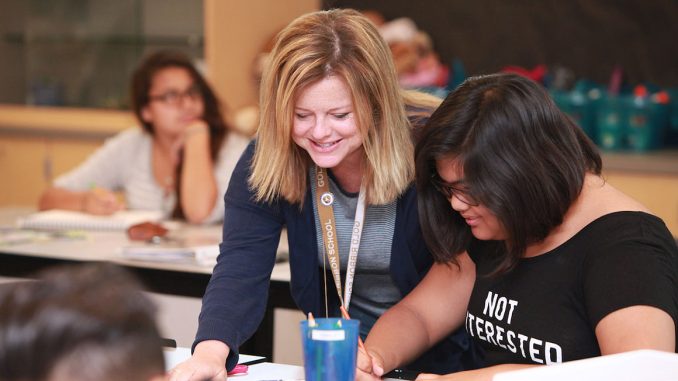
-
2 Synthesis of Concepts
Which is better? To provide equal access to inferior education or to grant everyone equal opportunities? This is an important question if we are ever to end educational inequality. The greatest problem is that a government might offer scholarships for millions of dollars, but at the same time treat certain students, mainly minority students and the poor, as inferior earners. In U.S. colleges and universities, no one can receive true equal opportunity unless he is removed from the lower classes. Otherwise you WOn’t have quali ty schools to attend. Students who grow up poor may be unable to attend college.
Granting everyone a shot at the same pie is going to increase costs no matter what the ingredients cost. This is especially true in the areas of computers, textbooks, and everything else with high unit costs.
-
3 Equal Access to Quality Education
The first step towards promoting equity is ensuring equal access to quality education for all students. This includes addressing disparities in school funding, infrastructure, and resources. Governments and educational institutions must prioritize investment in underserved communities, providing adequate facilities, technology, and qualified teachers. Initiatives such as targeted scholarships, free tutoring programs, and subsidized school supplies can also level the playing field for students facing financial barriers.
-
The teacher of the Culturally Responsive Teaching course brings to class all the unique backgrounds, experiences, and identities of the students. Thus we see her materials as inclusive learning environments in which everyone feels acknowledged, appreciated–and respected. Part of this teaching method is to incorporate culturally relevant content, use all-embracing language, and promote thought-provoking discussion of issues in society. If schools embrace diversity and practice cultural competence, then youngsters from any background will be sure to have a successful academic career and enjoy their personal life as well.
-
Addressing unconscious bias
Implicit behavior continues to play a silent but effective part in distinguishing between color and disadvantage. We educators and administrators need to acquire the skills on how they can uncover these blind spots. Developing fair, consistent school discipline policies, providing students with a curriculum more reflective of their interests and backgrounds, as well as hiring practices that are open and inclusive all pave the way to fairness in education. Moreover, we must foster an open dialogue about privilege, the impact of power on individuals’ lives and society at large. That way, teachers and students alike can begin to shed some of their biases in order not only through rational argument but experiences from western history prove it possible sometimes even hardened hearts will soften when people
-
Support for marginalized students
Students from minority groups, the LGBTQ+ community, and children with disabilities all face their own special troubles. Schools must provide tailored support services for these youngsters, such as counseling or training programs, safe places to let off steam. Advocating inclusive policies is equally vital: for instance non-gender-specific restrooms as well as becoming attuned to provide accommodations in environmental structures so that all students feel both affirmed and reinforced on their educational journey.
-
Engaging Families and Communities
Building solid partnerships between schools, parents and the community is a necessary condition for ensuring equity and efficacy of results. Schools should solicit advice from its patrons at every turn, bring parents into decision-making processes, as well as provide resources helping mom or dad take an active part in their childrens education. Getting outside groups involved–whether local businesses and leaders, or neighborhood organizations–can help improve access to educational opportunities. They also offer a means of addressing social factors like housing instability and healthcare disparities.
-
Data-Driven Approaches
To equitably implement strategies for making a difference, as a matter of course data is essential. Schools have to compile data on student results, like their academic achievements, graduating rate and any disciplinary records they acquire from being queried in compliance with demographic criteria. Such information can be used to plan non-specific pomegranate pills or policy reforms in favor of reducing disparities and facilitating fair achievement for all.
-
Lifelong Learning and Career Pathways
Equity in education goes far beyond just getting a college degree and successful job placement. It is more important to provide school students with comprehensive instruction on career development as well as vocational training on some higher level or other for rich and poor alike. In-company training programs, on-the-job training and cooperation with professionals in different industries will each expose students to many different career paths and at the same time help to bridge over the gap between knowledge and work.
Conclusion
Tackling the numerous, deep-seated problems that lie behind unequal education opportunities is something that needs altogether varied methods which address both lines of action at once. By refining our focus on fair access, culturally relevant teaching methods and public involvement, we will be able to create educational settings which help every student make his optimum contribution. Together we can build a future where education is indeed a springboard for positive change, and everyone has equal opportunities.